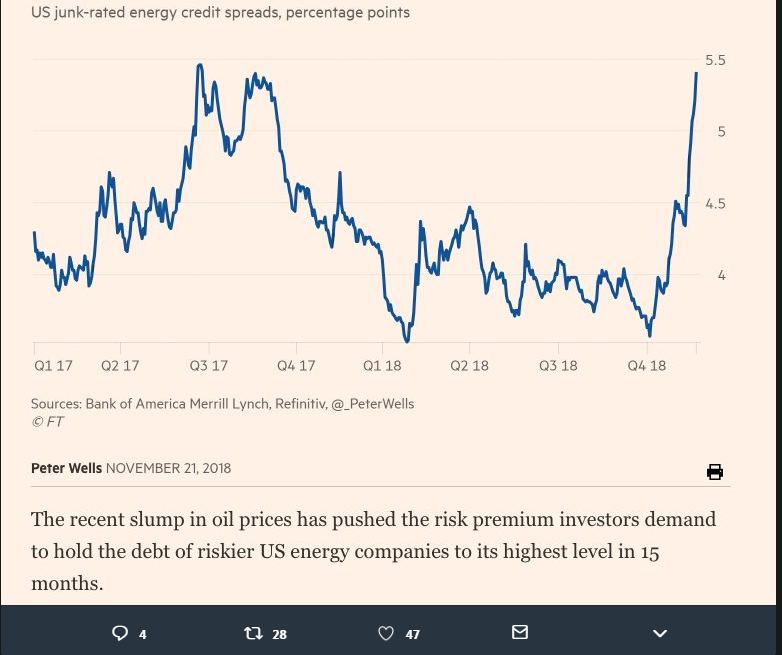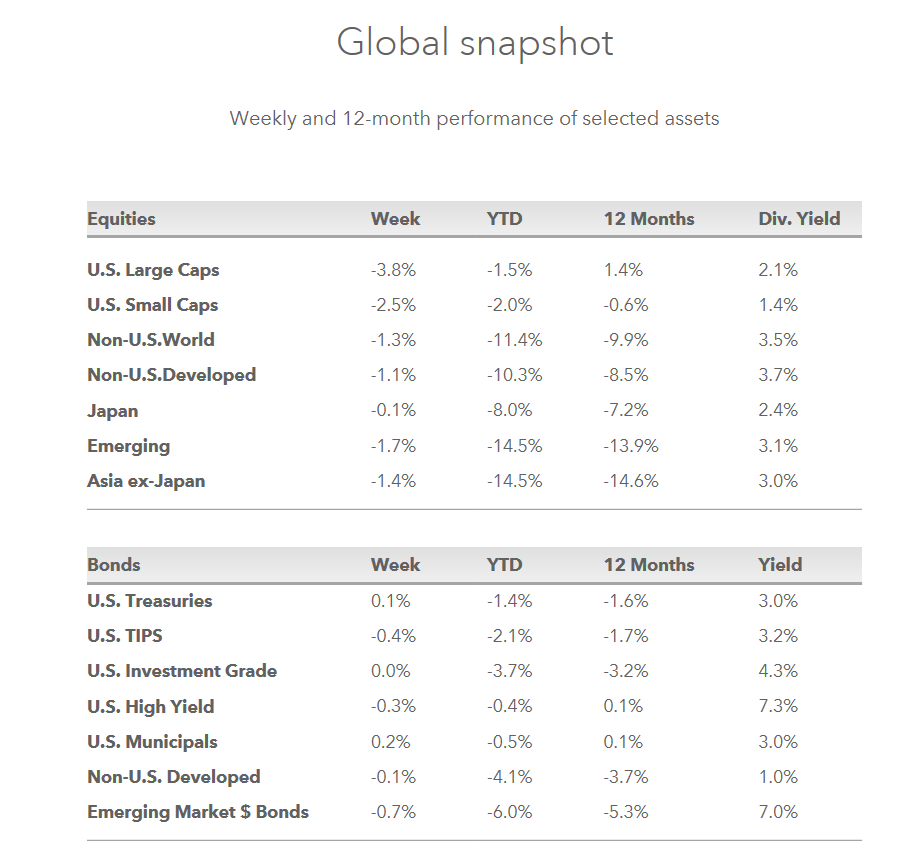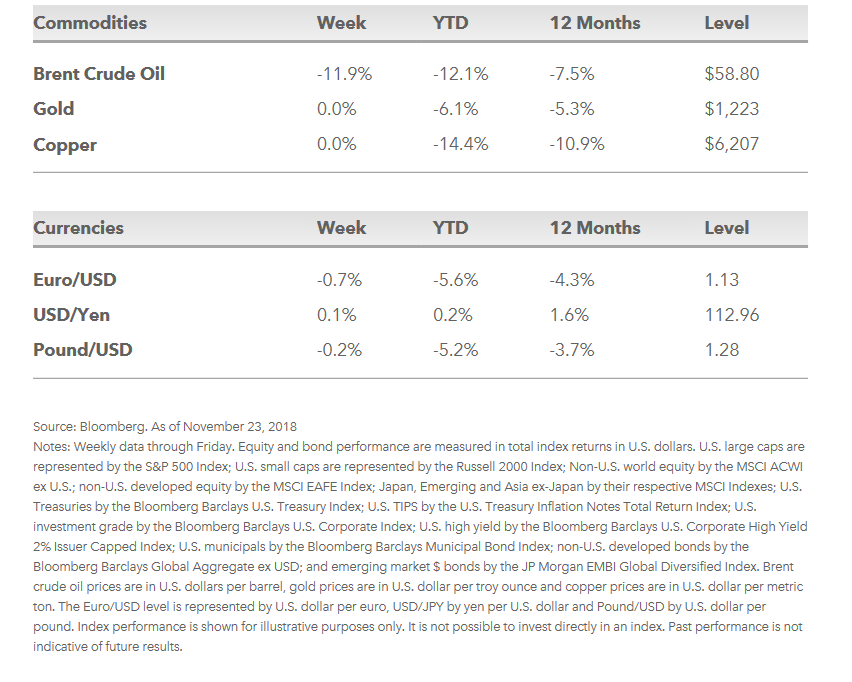1.Yields Pullback
5 Year U.S. Treasury Yield Pullback

10 Year U.S. Treasury Yields.

2.Rates Pullback with Inflation Expectations….Drop in Crude Slowing Inflation.

https://twitter.com/charliebilello
3.Don’t Mess with Texas…August was Largest Increase in U.S. Oil Production in 98 Years.

Texas Is About to Create OPEC’s Worst Nightmare By Javier Blas
4.Junk Spreads Blow Out for Oil Companies….15% of High Yield Index Bond Index is Energy.

@ukarlewitz
https://twitter.com/ukarlewitz
5.First Time in 25 Years that Stocks and Bonds Could Finish Negative…..First Year Since 1972 That No Asset Class Returned More Than 5%.
Blackrock Summary…Negative Straight Down the YTD Column.


6.Global Equities Technical Breakdown.
ACWI MSCI All-World…50day thru 200day to downside

7.Bitcoin YTD -75%….-35% One Week.

https://www.coindesk.com/price/bitcoin
8.90% of Chinese Families Own a Home….1/4 Own More than One Home.

People poured their life savings into housing. Today, 90 per cent of Chinese families own a home, while about one out of four Chinese households own multiple homes, according to research by China’s Southwestern University. Home prices have skyrocketed 325 per cent in the past two decades.

The Chinese dream is rooted in the very American notion of owning a roof over every head
9.Tappable Home Equity Up $3 Trillion in Five Years.

By
Ben Eisen and
Christina Rexrode
Nov. 25, 2018 10:31 a.m. ET
Rising mortgage rates are crushing much of the refinancing market. But Americans are still using refis to pull cash out of their homes.
More than 80% of borrowers who refinanced in the third quarter chose the “cash out” option, withdrawing $14.6 billion in equity out of their homes, according to government-sponsored mortgage corporation Freddie Mac . That is the highest share of cash-out refis since 2007.

Borrowers Are Tapping Their Homes for Cash, Even as Rates Rise
The trend is a sign of an economy that has sharply pushed up home prices but left paychecks growing much more slowly
10.Conquer Your Fear of Public Speaking with These 5 Tips
You’ll be surprised at the impact you can achieve in relatively little time.
Posted Nov 26, 2018
Public speaking is the single most difficult task in many people’s professional lives. As Mark Twain once famously quipped: “There are only two types of speakers in the world: (1) The nervous and (2) the liars.” But it doesn’t necessarily have to be this way. Use these five practical tips to help make public speaking a confident part of your own professional repertoire.
- Step into the shoes of your audience. Especially if you’re nervous about presenting, it’s really hard to step into the shoes of your audience – probably because you’re so focused on getting everything right on your end, and perhaps also on calming your own anxiety. But understandingyour audience is so important to public speaking. Even before you step on stage, you should be thinking about your audience when crafting your content. What do they know about your topic? Where should you then start in terms of explanation? What do they care about? What matters to them? And how can what you have to say solve their problem… or help answer their questions… or provide something useful to them? That should be the driving focus as you write your speech: to craft what you have to deliver in a way that truly delivers value to your audience, and in a way that they can easily understand and appreciate.
- Get honest feedback—and make sure you’re willing to receive it. Public speaking is a skill – and like any skill, you need practice and feedback to improve. So, especially as a young person just starting out, it’s really key to find ways to practice in front of an audience – even a small audience – and to get feedback, both about the content you’re sharing and also about you as a presenter. In terms of the content: you want to make sure your audience receives what you’re trying to deliver. Do they understand your message and framework? Do they get those two or three key points you really want them to come away with? And then, in terms of your style as a presenter: Are you engaging? Do you keep the audience’s attention? Can you bring elements of your personalityto the table, even if you fumble a bit? Find people whose opinions you trust to give you this feedback and be open to receiving it.
- Focus on why your content matters –and let that be your source of confidence. Everyone is nervous about public speaking – and especially about the impression we’ll have on others. And there’s no question that this external evaluation is a legitimate and important concern. But equally important in my experience is making sure that you yourself really lovethe talk you’re giving; that you care about the ideas; that you stand behind the concepts; that you feel like you’re doing something meaningful – and delivering something truly of value to the audience. Because if that’s the case, you’ll likely feel much more comfortable – and confident – delivering your message, and you’ll be more likely to impress your audience as well. So, bottom line: wow yourself before even thinking of wowing a crowd.
- Do your best to leave your notes behind. It’s certainly more comfortable to speak with notes…and perhaps even to put those notes up on a podium. But it also creates a barrier with your audience, which makes it much harder to connect and engage with them. I learned this lesson myself early in my careerwhen taking a public speaking class. We all spoke with notes in the class until the professor suddenly took away our notes one session and never let us speak with them again. To this day, I remember that sense of dread of having my notes taken away. But it also was a blessing in disguise. Ever since then I’ve spoken without notes and with a much greater sense of connection with my audience.
article continues after advertisement
- Identify what worries you most… and work on a solution to that.Not all fears of public speaking are alike. For some, it’s the idea of speaking to a room of complete strangers. For others, it might be the fearof forgetting what you wanted to say…. Or the fear that what you present will fall flat and be uninspiring. So, the antidote here is to locate the source of your worry and work on that specifically. For example, if you’re concerned that your presentation will fall flat, practice it in front of a crowd of trusted colleagues for feedback. If you’re worried that you’ll forget your content, bring notes, or create slides that guide you through the presentation. The point is that you have more power than you might think to craft a solution that makes public speaking just a little bit easier and doable for you.
In the end, there’s no denying that public speaking is challenging for many. But with a thoughtful strategy in mind and the courage to see it through, you’ll be surprised at the positive impact you can achieve in relatively little time.
Andy Molinsky is a professor of organizational behavior at Brandeis University and the author of the books Global Dexterity and Reach. For more, please visit www.andymolinsky.com.